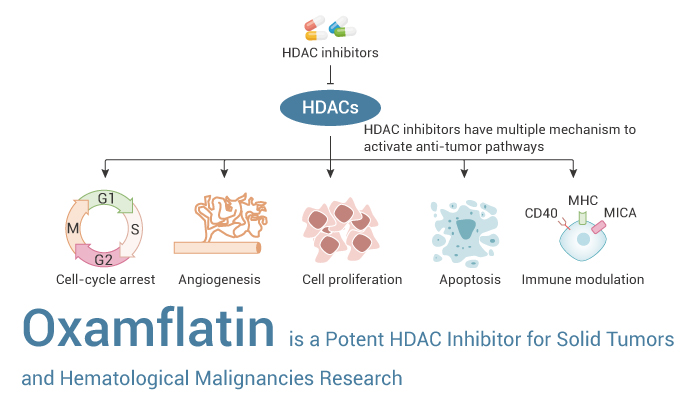HDAC (Histone deacetylases) are a class of enzymes that remove acetyl groups (O=C-CH3) from an ε-N-acetyl lysine amino acid on ahistone, allowing the histones to wrap the DNA more tightly. This is important because DNA is wrapped around histones, and DNA expression is regulated by acetylation and de-acetylation. HDACs are evolutionary conserved enzymes. HDACs operate by removing acetyl groups from histones and other protein regulatory factors, with functional consequences on chromatin remodeling and gene expression profiles. Its action is opposite to that of histone acetyltransferase.
HDACs constitute a family of proteins highly conserved across all eukaryotes. Their main action consists in removing acetyl groups from DNA-binding histone proteins. The function of HDACs is therefore that of driving a higher level of complexity in gene regulatory networks by finely tuning transcript levels in all eukaryotic cells. HDACs play an important role in physiological processes such as development and cellular homeostasis, and play an important role in pathological scenarios, such as neurodegenerative disorders, genetic diseases, and cancer.

Oxamflatin (Metacept-3) is a potent HDAC inhibitor.
Oxamflatin is a compound containing the aromatic sulfonamide and hydroxamic acid groups. And it is also a potent HDAC inhibitor capable of inhibiting the growth of mouse and human cancer cell lines. Importantly, Oxamflatin can inhibit intracellular HDAC activity, as a result of which marked amounts of acetylated histone species accumulated. Oxamflatin in the nM range induced morphological changes in OVCAR-5 and SKOV-3 ovarian cancer cell lines. Treatment with Oxamflatin also led to decreased cell viability. Moreover, Oxamflatin was able to significantly inhibit DNA synthesis and cell proliferation. Besides, Using real-time PCR and Western blot analyses we demonstrated that oxamflatin was capable of downregulating the expression of c-Myc, CDK4, E2F1, and the phosphorylation levels of Rb protein, but upregulating p21.
All in all, Oxamflatin is a potent HDAC inhibitor that exhibits anti-tumor activity.
References:
[1] Milazzo G, et, al. Genes (Basel). 2020 May 15;11(5):556.
[2] Wang Y-L, et, al. Curr Mol Med. 2016;16(3):232-42.